
Wayne L. Rosetti Sr.

The passion to create pulses in the heart of those born to be artists. From the moment the spark ignited in his soul, Wayne Rosetti, Sr., set his life goal on fulfilling that need, delving into ever changing ventures of artistic moods and styles. For sixty years this drive has filled his home with rarely viewed masterpieces and set the stage for his first-ever commercial venture, the "World of Loop People".
Wayne Lynn Jacob Rosetti was born in Biloxi, Mississippi on January 23, 1937 and raised on Point Cadet. His parents, George Rosetti (1909-1981) and Edna Mary Melvin Rosetti (1914-1979), part-owners of a restaurant named "Rosetti Poor Boys" at the Ocean Springs Bridge. Like many children of that era, he helped out at the restaurant during his teenage years, until graduation from Biloxi High School in 1954.
As a 15-year old, Biloxi teen, Wayne commenced weight training and has continued such his entire life with very little down time. He was a pioneer at Biloxi in body building with homemade weights. He is proud that his weight training produced amazing results from protein and milk with no supplements or steroids.
Pictures of a young Wayne Rosetti are included:
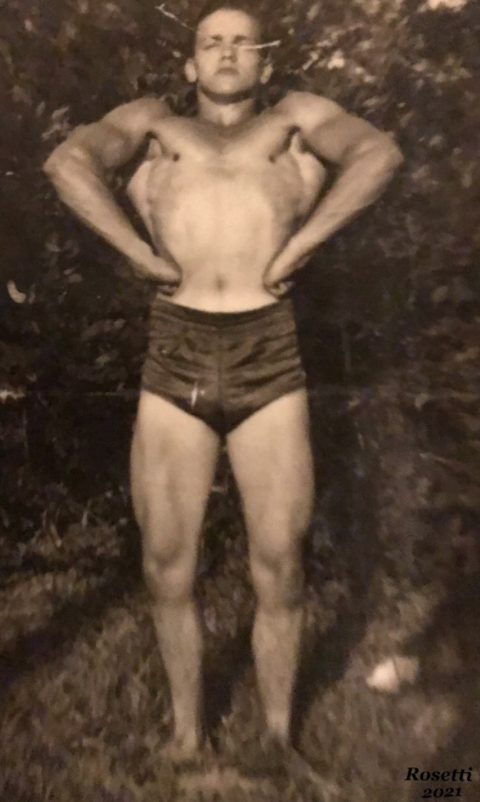
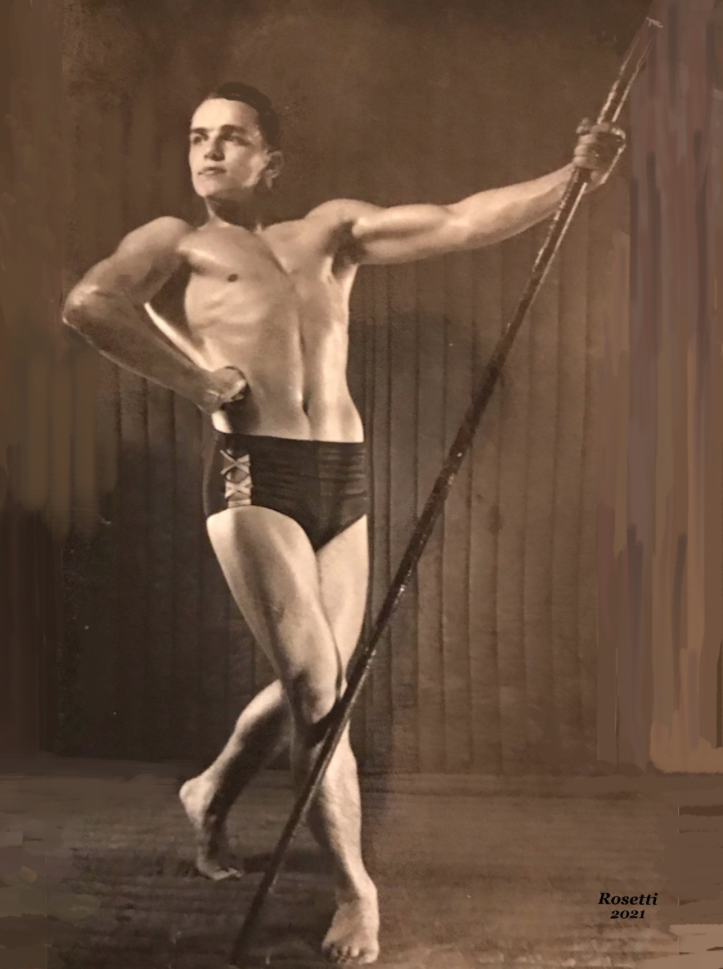
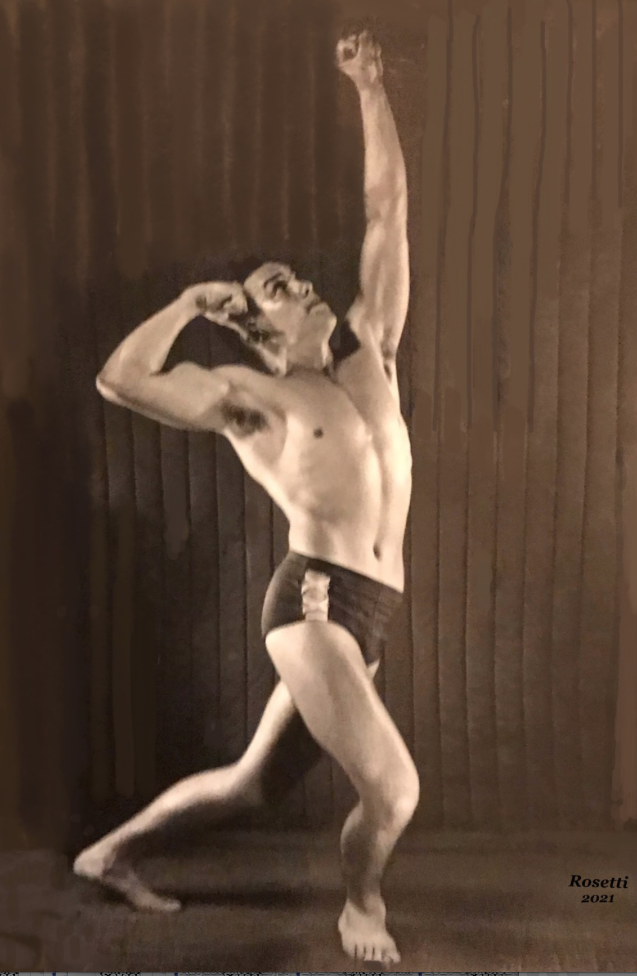
A more mature Wayne
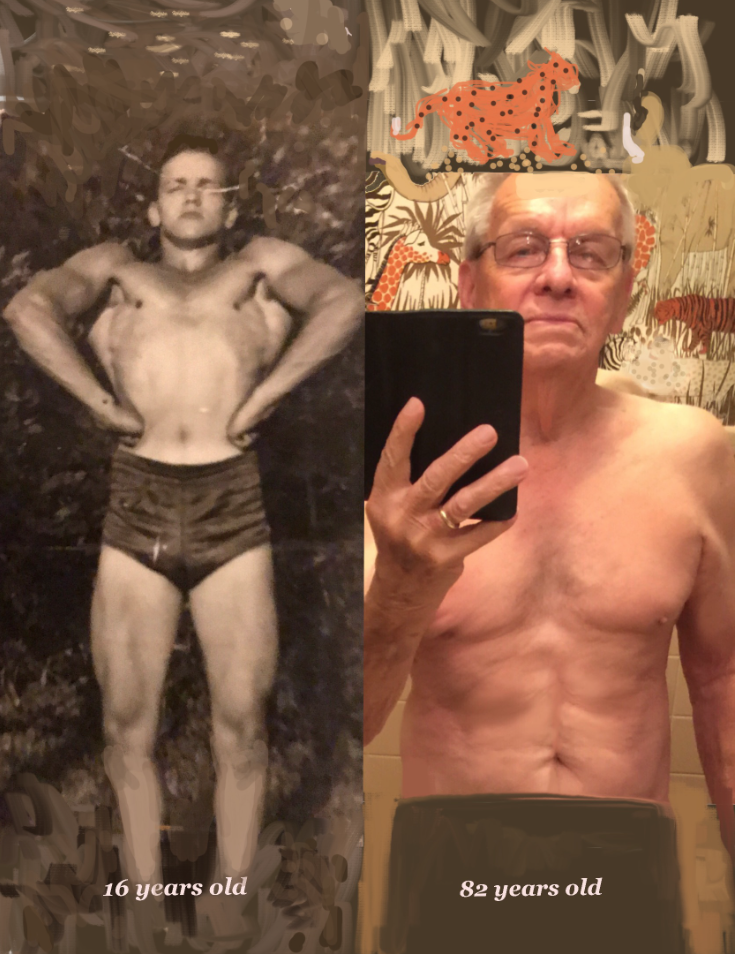
Wayne matriculated to the University of Southern Mississippi in Hattiesburg that fall, but his college career was cut short by a chance encounter. In his fourth month a friend reported he was getting ready to join the army. Wayne decided to drop out of school to serve his country too, and, by the way, take advantage of the GI Bill tuition benefits on his return. After obtaining his parents’ permission, he launched a three-year army stint.
Army life provided sufficient "down" time for Wayne to engage in his favorite activity, reading. His diverse interests ran to both fiction and non-fiction, especially history. Near the end of his stent he went into town on leave and saw the movie, Lust for Life, with Kirk Douglas. This show, about the life of Vincent Van Gough, included a scene with Van Gough’s brother Theo, an art dealer. Vincent couldn’t sell many of his paintings, so they accumulated at his brother’s apartment, presenting a habitation loaded with paintings. The scene touched something inside Wayne and at that moment he decided he wanted to be a painter. Prior to that inspiration he’d never had that feeling, nor had there been a painter in the family.
While in town he bought a sketchbook, pencils, and a paperback book with an introduction to art whose first rule stated, "Sketch everything!" He took that to heart. His first sketches were of his combat boots and towel on his bunk. The results pleased him enough that he soon graduated to cardboard canvas and an inexpensive oil painting set. At the time he was stationed in Texas, and, upon attending a bullfight, went back to the base and painted his first large piece, the fight, and found himself gratified with his results.
Discharged from service in 1957, he returned home, searching for a job that would give him time to paint. His uncle owned a wholesale plumbing and electric supply on Howard Ave. and suggested he go into the family trade. With credit given by his uncle he rented a small building on 25th Ave. and hung a homemade sign. In two years he was doing so well he moved his business, "Rosetti Supply Co.", into a larger space on 28th St. Once the business was established he found he had spare time to devote to his art.
In December 1964 he married his one and only, Helen Bates. From the very beginning she had a strong influence on his art, Wayne consulting her on such things as color choices. Their marriage has survived happily to this day, with two grown successful offspring.
In the late 1960s he discovered an art shop in Edgewater Mall that sold him clay for sculpting. Similar to his painting, he decided he would pursue his sculpture without any formal training. "My first one, a frog, came out so well I wanted to do more," Wayne recalled. "Next I created a seal, just from memory."
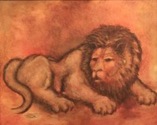
Lion in Gold
He found he could rely on the pictures in his mind for both his sculpture and his painting, even for complex scenes such as running water. One of his earliest animals painted from memory is his Lion in Gold.
In the late sixties Wayne developed new ideas about how to approach his art, beginning with research into the masters and their techniques. This was a compromise he made, based on his decision not to go to formal training, his concern being possible contamination of his ideas from the standard education. He said, "I wanted all my art to come from within."
Another decision he made around this time was to continue to change his media and his subjects. He reports having read that most artists become known for one particular type of art, and, especially if that form becomes popular, nine out of ten of those artists won’t deviate from the style that’s responsible for their income.
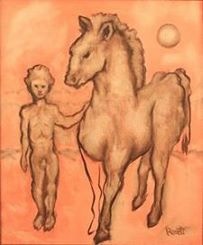
Horse and Boy
Consequently Wayne focused on constant experimentation. "I would not limit myself to any type of material," he said. "I’d even use iodine, shoe polish, anything, to make it expansive. If I developed new techniques, I would emulate it with another one. I progressed from Lion in Gold to Horse and Boy; same background, palette, and technique. I’d do a series of that work implementing extensions in color and subject matter." He said he wouldn’t implement a new technique until he felt he’d exhausted all aspects of the current one.
Wayne’s subjects varied depending on his mood, commonly a historical theme, or something from nature such as an animal. He was striving for an art with a universal perspective, topics resistant to dating. As he matured, he concentrated on what Leonardo da Vinci described as "gesture" – like the position of the hand or the smile of the face, the details that set the theme for the rest of the painting.
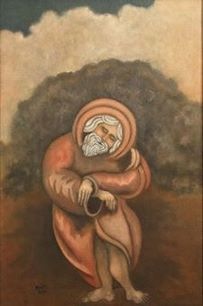
Holy Man
In his Holy Man, he wanted to incorporate two of the essential parts of religion, compassion and humility. He chose a dark palate and emphasized the themes with the man’s expression and posture. Wayne’s palate tends to be consistently dark, often based on burnt umber, so much so that a relative described it as typical of a "Medievalist."
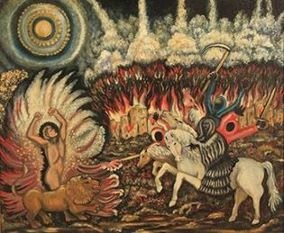
The Four Horsemen of the Apocalypse
Wayne remembers his first large painting, commissioned by his brother who was inspired by Edward Hicks’ 1834 painting "Peaceable Kingdom." This was in the early 1960s, when large canvas was difficult to come by, requiring having the canvas specially made. After completing the work he was so taken with the theme he created a similar one for his own home.
During his early career selling opportunities were rare, with few local galleries and only the occasional small art show. Though his portfolio was beginning to grow, even those opportunities he rarely explored, for he felt reluctant to try to sell. "When you show your art work," he said, "you show how you feel, and expose your inner self. Later on I learned that some people will like it and some won’t. In my youth I thought every piece had to be a masterpiece. They don’t. Even so, each one must be redeemable art in its own right."
Like most inspired talents, his production has been prolific, though not necessarily continuous. His usual workdays were eight hours, sometimes longer. He reports short bursts of creativity, worn down by concentration and determination of placing the art, the colors, and the contrast. At times he’d take a leave of absence from painting, feeling burnt out. "After a break I’d be inspired by a comment or something I’d seen."
Sometimes a visual, musical, or literary allusion would inspire him. Andrew Lloyd Weber’s "Phantom of the Opera" inspired one piece. Another inspiration came from the biblical reference to the "The Four Horsemen of the Apocalypse." "Those were all those destructive forces striving to overwhelm mankind. My approach was to project how Man comes face-to-face with those forces, but with the help of nature can win the battle in the midst of all that destruction."
He assesses his style as a mix; often merging impressionistic, realistic, and primitive styles in a form where they could all gel. He loved experimenting with new forms, working with them until they’d been assimilated into his work. Around his home he pointed to different pieces and described their technique. "Naïve." "Minimalist." "Outsider Art." This latter is the concept of painting like somebody who has had no formal training and thus creating a unique approach to art. Pieces of this type have, for example, exaggerated heads, done with a personal interpretation. "Assemblage" developed from this form.
"I was quite taken with Picasso for quite awhile. Klee also an influence."
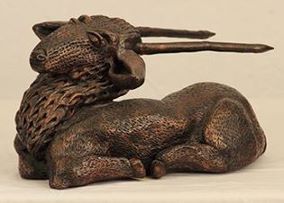
The Ram
In describing his sculptures, Wayne likes to base the forms on realism, such as The Ram. However, though based on realism, he liked to exaggerate the forms, giving them a whimsical look providing each its own personality.
"Thus they’re created not from a real life, but more my interpretation of the life. In my paintings I put the animals in appealing poses, though they may not look like real life, it might even be better than what real life can portray. (Figure 8) I brought that approach to my sculpture. I was interested in animals and nature and how to be creative in my interpretations. I studied primitive sculpture, like in African Art and New Guinea art, where exaggerated forms have real meaning to them. It becomes very striking when you see them." For the sculptures’ skeletons, known as the armature, he utilized everyday things, such as empty cola bottles. Statue in Green and Gold (Figure 9) is three parts, a brick, a sculptured bird, and an upside down whiskey bottle.
Wayne described his concept in regards to one of his early paintings, The Warrior. "A warrior always carried death on his shoulder – that’s the only way to be brave enough to go into battle. I had him facing death, and he was facing him with his shield up. Going to face Death."
Once he had the work created he took it to a hotel that was allowing local artists to hang their work for sale. When he showed it to the curator she didn’t believe he had painted it, saying it was too good, refusing to hang it.
Wayne’s work is most remarkable for almost never having been shown. He just kept hanging each new piece on a blank spot on the wall, until his house seemed completely filled up.
The one exception to that history came about serendipitously when, in 1994, a repairman came by to fix Wayne’s old grandfather clock. When the man was inside the house he was fascinated by all the paintings. He had heard the owners of a new furniture store were looking for an artist to show in conjunction with their opening. This resulted in his fifteen minutes of fame when Dave Elliot from WLOX came to the home to film and interview. At one point Dave Elliot asked, "What do your children think of your art?" "My children grew up around art," Wayne replied, "So it wasn’t a big thing, it was just something that Dad did. Basically, they simply enjoyed it."
Wayne took forty of his paintings to the furniture opening resulting in thousands of views brought in by the television spot and other advertisements. The show lasted a month and during that period Wayne sold three of his works. That ended up being his only show and consequently his only sales. Fifty years of painting and only three sales!
Wayne’s plans to forever keep his talent private were challenged in 2010 when his son-in-law, Roger Applewhite, saw Wayne’s art. Roger was so taken he told Wayne he really needed to have people see it. He also suggested Wayne come up with something completely new, something marketable.
Analyzing his work, Wayne came up with the concept of "the loop. "He realized he’d always used a loop in his art. He decided to create the total facial structure with a loop, executed from a low starting point, looping up to do the nose, the eyes, and then down to do the mouth without stopping. It had to be fluid and had to be accurate. Once completed, he admired the result, what he describes as "Great; an abstract / modern theme." As a preparation for the loop people, Wayne experimented with Band-Aids, using them to form a body on paper, and adding human characteristics.
"The object of art is to alter your perspective on how you look at things, sometimes everyday things," he explained. "After that work, I’ll never look at Band-Aids the same way again. I framed the Band-Aid work and that set me on a quest to show how innovative I could develop art with this loop concept." His experimentation with loops began to take off with an initial 10 ft. x 20 ft. creation, made on four separate canvasses and now hanging in his son’s home. He progressed from the basic loop format to adding smaller loops to it. His forms developed from simple nude humans to animals, such as a baby pig and a rhino. For this work he used very bright colors, different than his past dark palates. The concept of the loop people became to make everything in it out of loops. This inspired a whole alternate universe, different landscapes and unique forms. Soon he added scenes, volleyball, playing Frisbee with a dog, crab and pier fishing. For the commercial aspect he wanted drawings with a broad appeal; whimsical, lighthearted, and fun. (Figures 10 & 11)
It’s been a remarkable career for this lifelong artist. From Wayne Rosetti’s first sketches of army boots and painting of a bullfighter, through scores of years learning new styles and techniques, he has finally come full circle to a lighthearted modernism. Or, should we say, full-loop, as his new delightful creations so well show.
Lagniappe
Seventy-six-year-old Wayne Rosetti has been painting since the age of twenty, producing more than a thousand remarkable pieces. This exclusive sampling of his life’s work is a must-see, demonstrating his experimentation with multiple styles and media. Inspirations from Van Gogh, Picasso, and Da Vinci, draw attention with their fetching golden colors and demanding images. Religious influences with iconoclastic representations such as "Animal Kingdom" from the Bible and "Holy Man" mix with African-style sculptures.
Rosetti is experiencing a new wave of creative energy. Encouraged by his son-in-law, Roger Applewhite, Wayne used found objects from Applewhite’s collection for new sculpture designs. Inspired by these new materials, Wayne taught himself to weld on YouTube, crafting yard art. He repurposed old circuit boards bringing them to life as colorful characters, combined scrap metal parts from ship- parts into clever table top sculptures. And, he gave life to the "Loop People," a modern/abstract interpretation based on the concept of a single structured loop. "The object of art is to alter your perspective on how you look at things, sometimes everyday things," Wayne explains. Initially representing people by adding features to single loops, the work progressed to multiple loops of various sizes, from simple nude humans to wild and domesticated animals, including puppies, pigs, and even a rhino. The eye-catching appeal of this work is heightened by the spectrum of imaginative themes displayed in bright contrasting colors.
Wayne Rosetti’s captivating new art theme, the "Loop People" will be unveiled November 2 and 3 at the 2013 Peter Anderson Festival in "Rosetti Park". Created by Roger and Vicki Applewhite, the large tented area will feature Wayne Rosetti’s captivating new art theme, the "Loop People." In a venue the Applewhites call a "Muse Market," select artists will showcase their work in a venue of live music and a "portable gallery" featuring over forty years of never before seen original Wayne Rosetti artwork. This temporary showcase is a prelude to the Rosetti Gallery that is expected to open in Ocean Springs on Cox Avenue in mid 2014.
Stay tuned for updates on biloxiartists.com!
2021
WAYNE'S WORLD
As it was one of Helen’s favorite it stayed on our wall. As the offer was in the thousands I looked for an app more suitable for artist and came across Instagram, I also at the time started doing digital art I proceeded on a learning curve of both disciplines and became proficient at both.
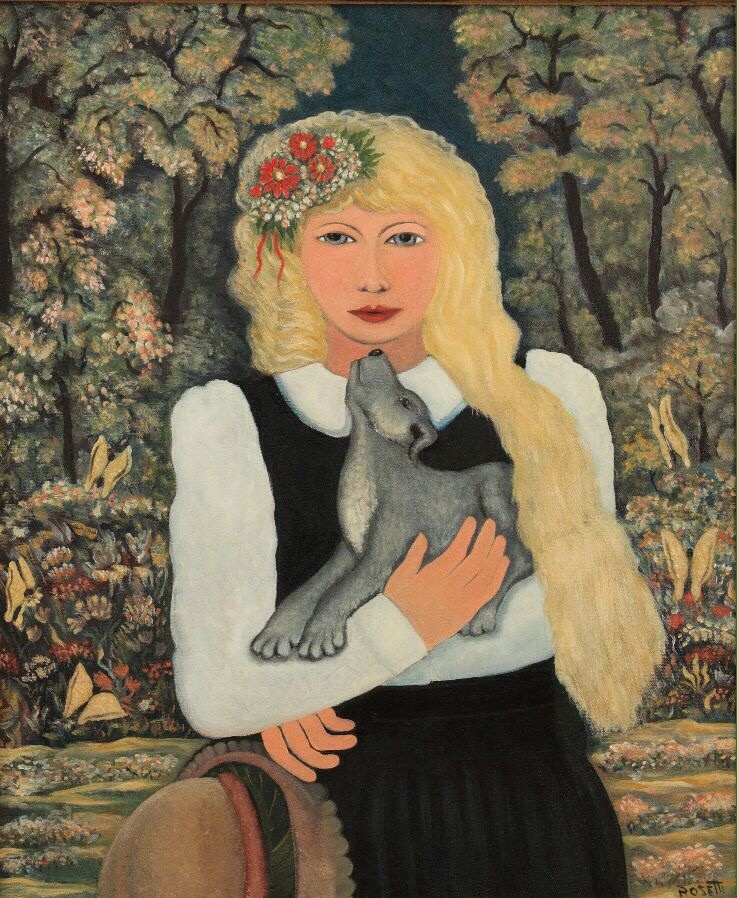
Puppy Love
[Helen's favorite NSF]
Shortly there after I posted a drawing I had done of Mother and Child (below) and a fellow woman artist saw it and posted it to the Instagram account of Jerry Saltz, Pulitzer Prize winning art critic for the New York Magazine. Afterwards he started following my post. Occasionaly, Jerry would highlight an artist and promote their art to his 350,000 followers. Much to my delight he highlighted my art with this painting below which he liked very much.
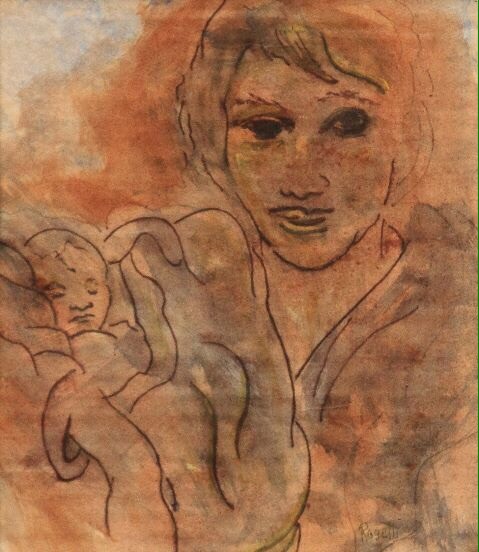
Much to my delight Jerry Saltz highlighted my art with this painting below which he liked very much. From then on he would make favorable comments on a lot of my works.

Jerry Saltz
Here are some post with his comment below including likes by his famous wife, Roberta Smith, art critic for The New York Times. Also included are my portraits of Jerry and Roberta.
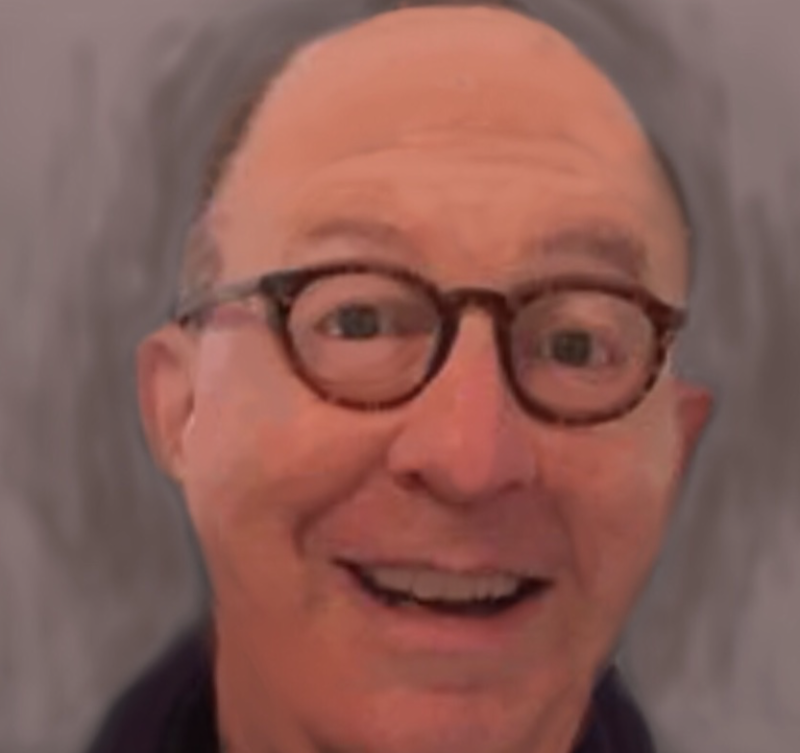
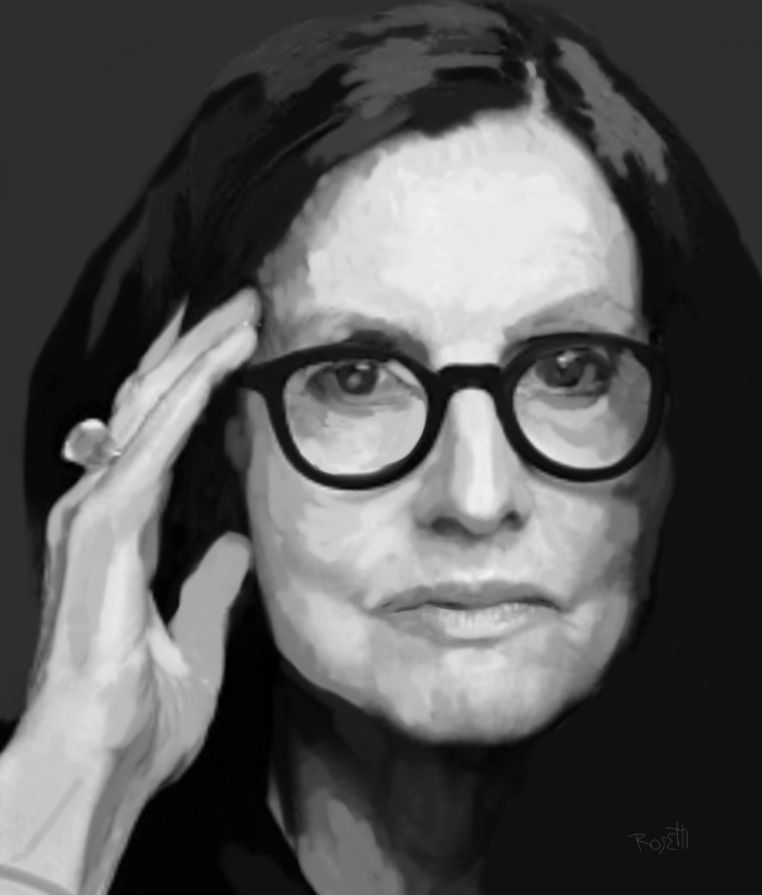
Jerry Saltz and Roberta Smith
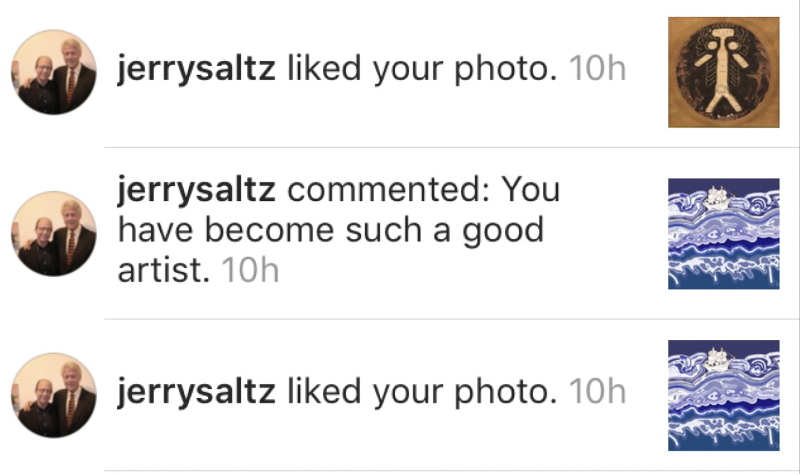
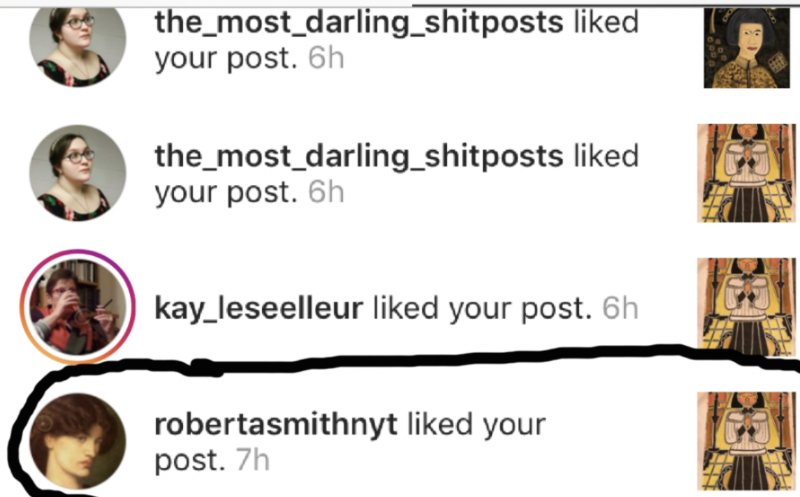
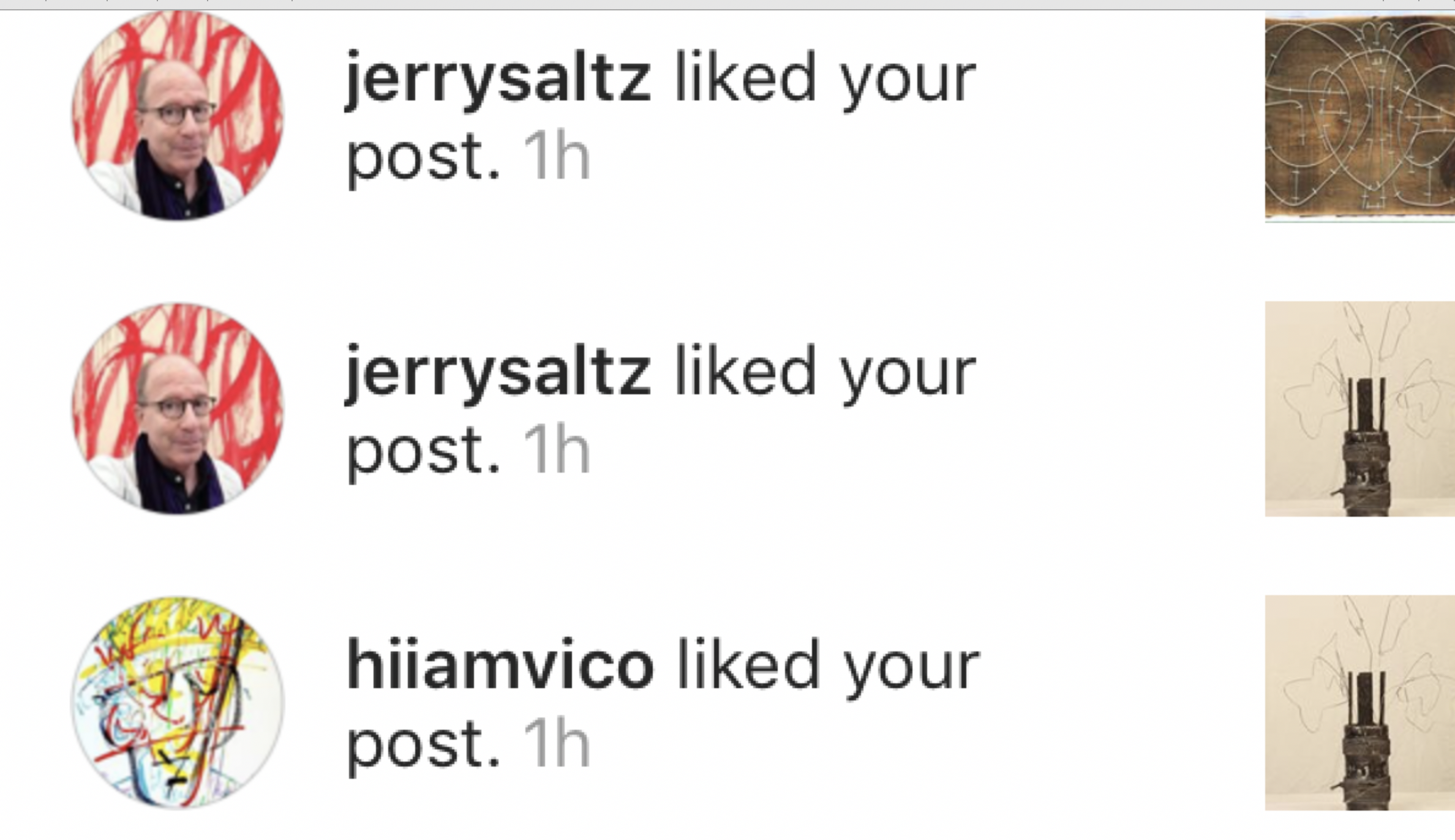
As I met more artist on Instagram one stand out artist was Matthew Wong who we exchanged likes on our respective sites . He was becoming a well known after a sellout exhibition in New York . As we exchanged comments on our art I was truly impressed with his art. Later I found out he was very depressed and committed suicide. It shocked the whole art world. As a tribute, I did a digital art work in honor of his memory.[image below]
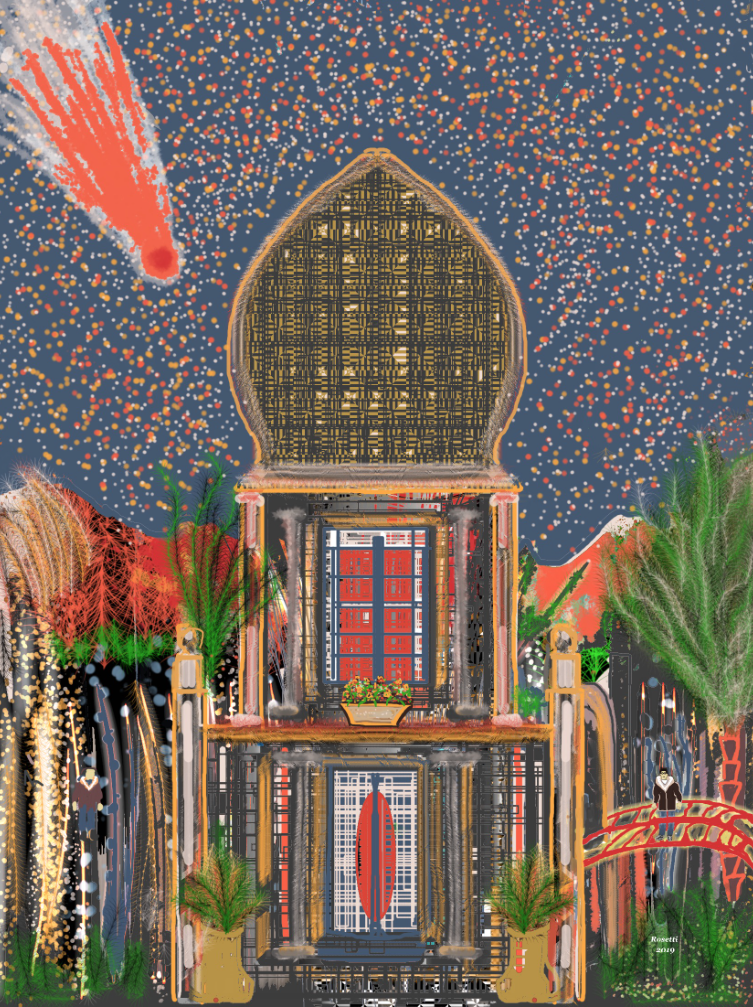
'A Tribute to Matthew Wong'- Mr. Wong is standing on the crossover bridge to his shrine on left. Everyone was sad for days after. Such a loss. I met and made some very talented and amazing people on Instagram too many to mention here . From then on I became very familiar with the New York art market and adjusted my art and perspective to expand my work.
A couple of highlights one of my pieces made the back cover of Cocoa magazine ( Journal of Cornell Contemporary Arts).[image below]
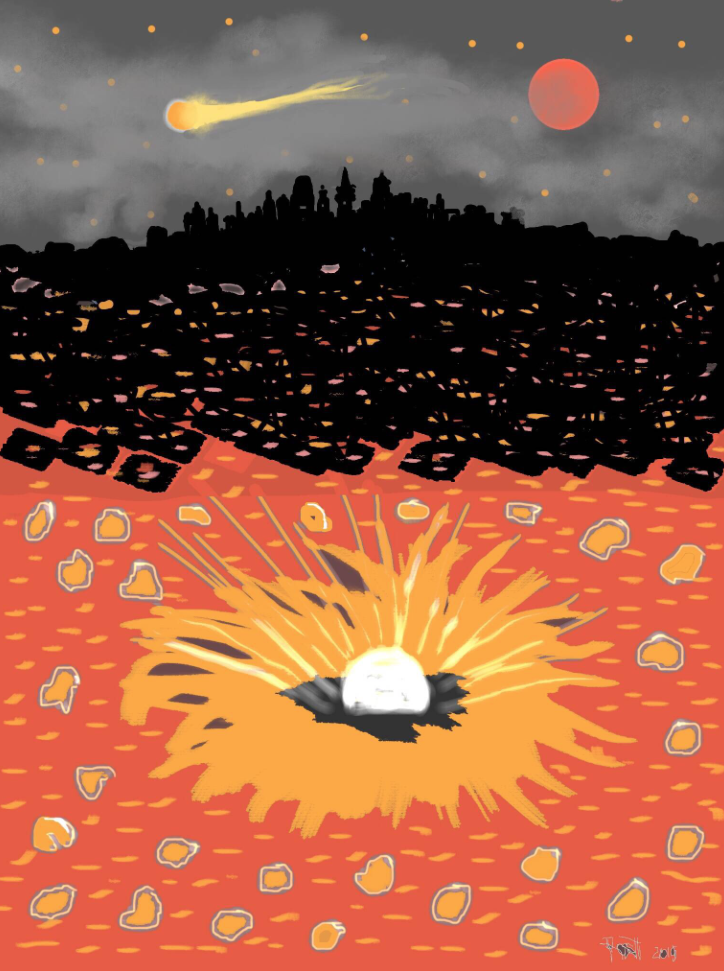
Another request I had was from an artist who liked the image on one of my carved ceramic plates and ask my permission to have the image tattooed on his arm which I told him that would be an honor. [image below]
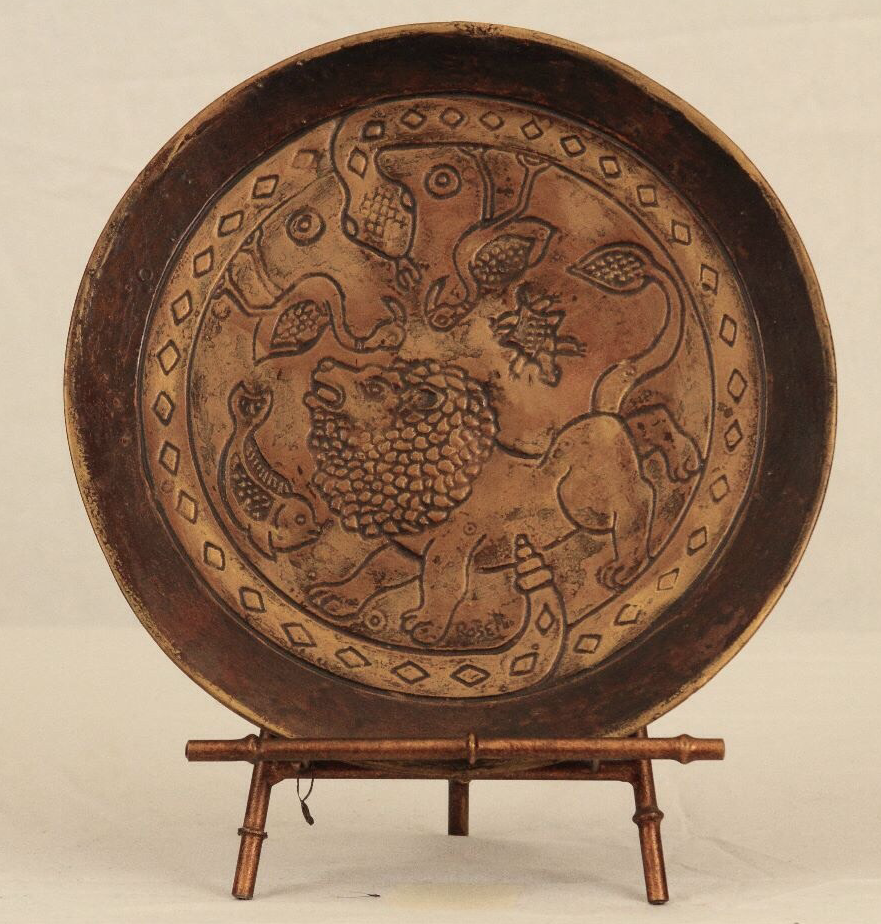
To sum up my laste endeavor was to emulate some great masters one is The Hag [Tribute to Goya].[image below]
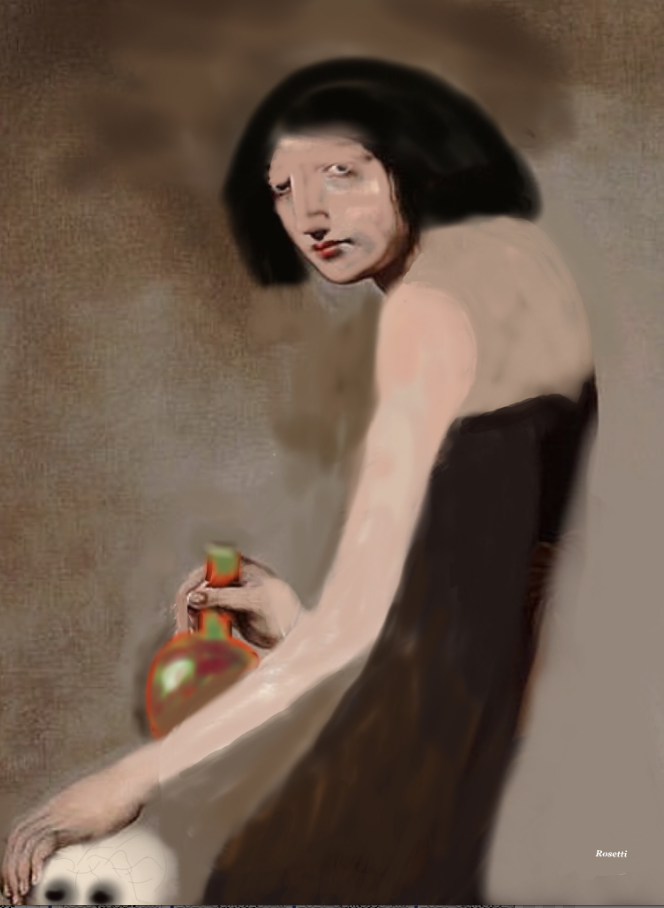
The other Eve a special work done for Roger Applewhite, a fellow artist and my son-in-law, and a tribute to Lucas Cranach the Elder.[image below]
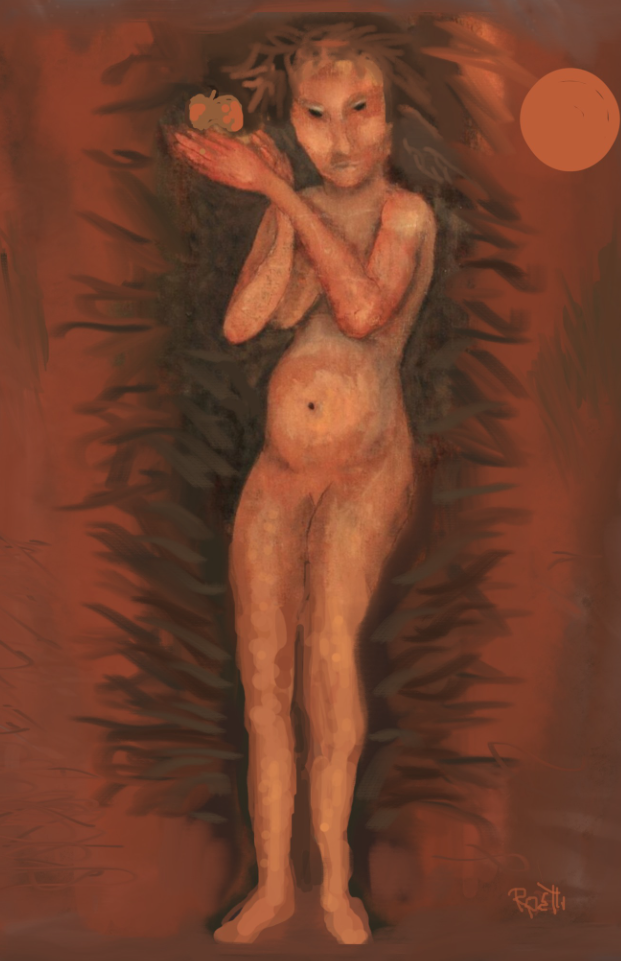
REFERENCES:
The Daily Herald, 'Biloxi News Paragraphs [Rosetti baptism]' January 8, 1937.
- Printer-friendly version
- 1819 views